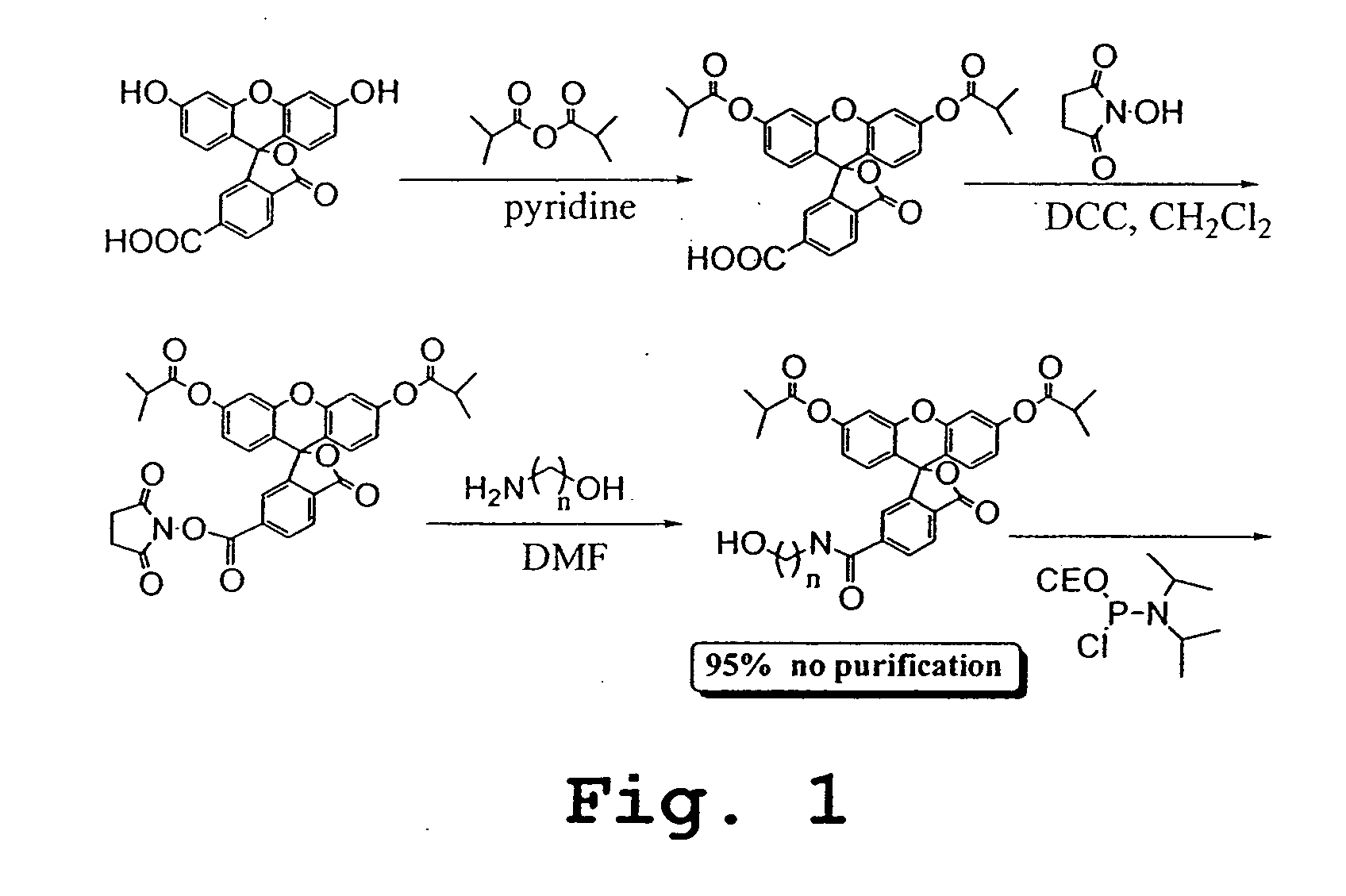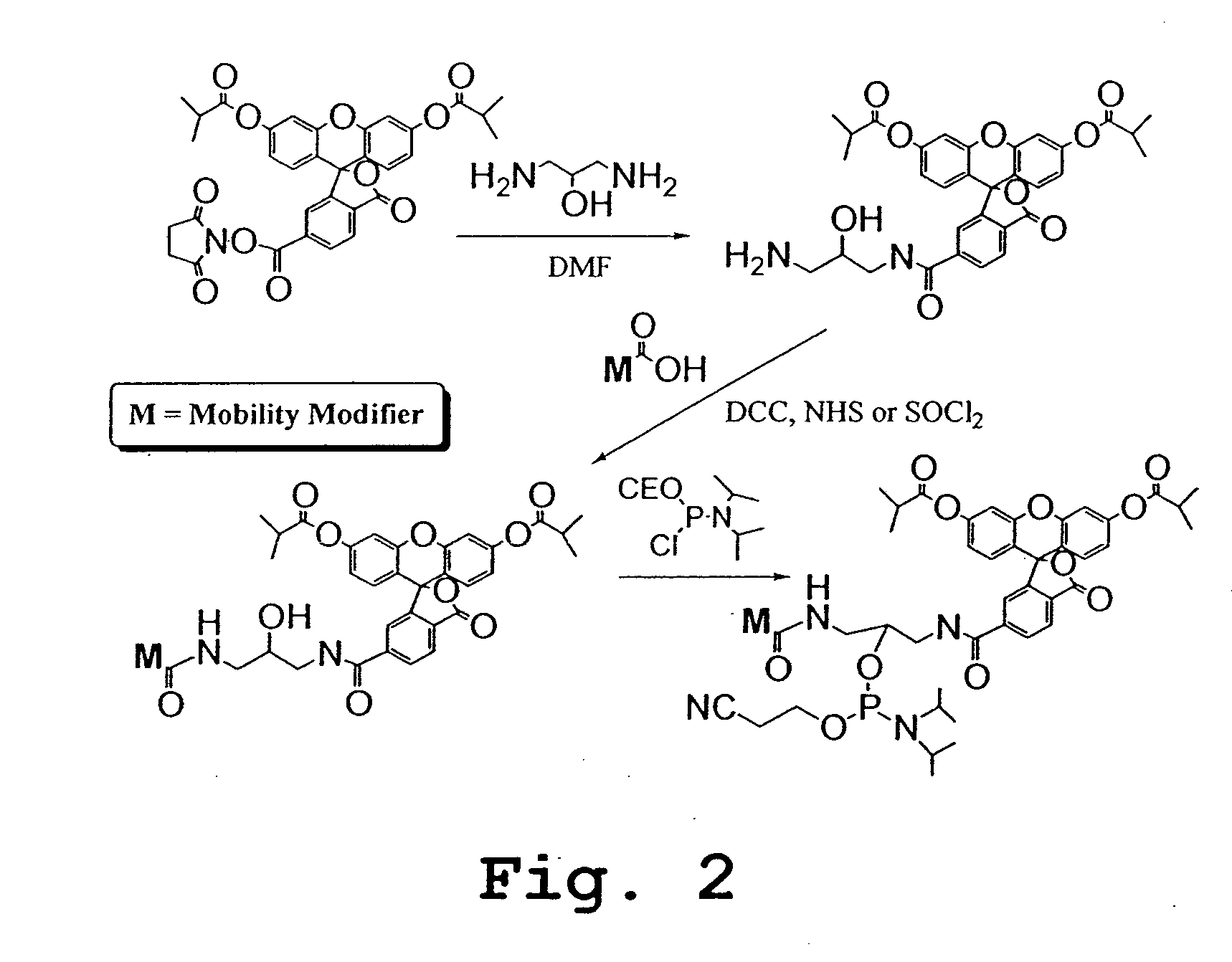Multiplexed analysis by chromatographic separation of molecular tags
- Summary
- Abstract
- Description
- Claims
- Application Information
AI Technical Summary
Benefits of technology
Problems solved by technology
Method used
Image
Examples
example 1
Conjugation of Photosensitizer Molecules to Assay Reagents
Photosensitizer molecules are conjugated to a metal affinity agent, a boronic acid containing agent, a hub molecule, and the like by various conventional methods and configurations. For example, an activated (NHS ester, aldehyde, sulfonyl chloride, etc) photosensitizer (Rose Bengal, phthalocyanine, etc.) can be reacted with reactive amino-group containing moieties (aminodextran, amino-group containing agents (with appropriate protection of metal binding sites), other small and large molecules). The formed conjugates can be used directly (for example the antibody-photosensitizer conjugate, Biotin-LC-photosensitizer, etc.) in various assays. Also, the formed conjugates can be further coupled with antibody (for example, aminodextran-photosensitizer conjugate containing 20-200 photosensitizers and 200-500 amino-groups can be coupled to periodate oxidized antibody molecules to generate the antibody-dextran-sensitizer conjugate) ...
example 2
Conjugation and Release of a Molecular Tag
FIG. 7A-B summarize the methodology for conjugation of molecular tag precursor to an antibody or other binding moiety with a free amino group, and the reaction of the resulting conjugate with singlet oxygen to produce a sulfinic acid moiety as the released molecular tag. FIG. 8 A-J shows several molecular tag reagents, most of which utilize 5- or 6-carboxyfluorescein (FAM) as starting material.
example 3
Preparation of Pro2, Pro4, and Pro6 through Pro13
The scheme outlined in FIG. 9A shows a five-step procedure for the preparation of the carboxyfluorescein-derived molecular tag precursors, namely, Pro2, Pro4, Pro6, Pro7, Pro8, Pro9, Pro10, Pro11, Pro12, and Pro13. The first step involves the reaction of a 5- or 6-FAM with N-hydroxysuccinimide (NHS) and 1,3-dicylcohexylcarbodiimide (DCC) in DMF to give the corresponding ester, which was then treated with a variety of diamines to yield the desired amide, compound 1. Treatment of compound 1 with N-succinimidyl iodoacetate provided the expected iodoacetamide derivative, which was not isolated but was further reacted with 3-mercaptopropionic acid in the presence of triethylamine. Finally, the resulting β-thioacid (compound 2) was converted, as described above, to its NHS ester. The various e-tag moieties were synthesized starting with 5- or 6-FAM, and one of various diamines. The diamine is given H2N{circumflex over ( )}X{circumflex ove...
PUM
| Property | Measurement | Unit |
|---|---|---|
| Mass | aaaaa | aaaaa |
| Pressure | aaaaa | aaaaa |
| Polarity | aaaaa | aaaaa |
Abstract
Description
Claims
Application Information
 Login to View More
Login to View More - R&D
- Intellectual Property
- Life Sciences
- Materials
- Tech Scout
- Unparalleled Data Quality
- Higher Quality Content
- 60% Fewer Hallucinations
Browse by: Latest US Patents, China's latest patents, Technical Efficacy Thesaurus, Application Domain, Technology Topic, Popular Technical Reports.
© 2025 PatSnap. All rights reserved.Legal|Privacy policy|Modern Slavery Act Transparency Statement|Sitemap|About US| Contact US: help@patsnap.com



